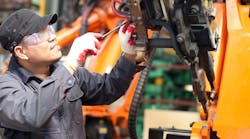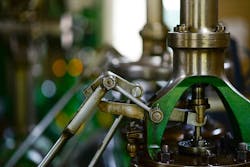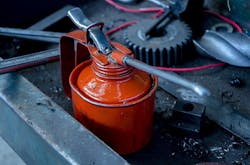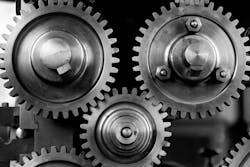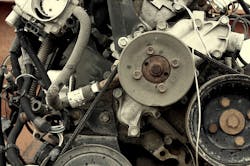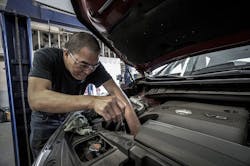6 Heavy Machine Maintenance Tips to Extend Longevity
Whether it is a mining project or a manufacturing unit, no business wants to experience downtime. Unplanned downtime comes with enormous financial costs and may even cause your business to lose its competitive edge.
According to a study sponsored by Service Max and conducted by Vanson Bourne of GE Digital, 82% of companies have experienced unplanned downtime over the past three years. Those outages lasted an average of four hours, costing an average of $2 million. As a result, zero unplanned downtime has now become a high priority for almost 72% of organizations.
Credit: Pixabay
However, in most manufacturing units, heavy machinery is the backbone of the business. The proactive maintenance of your heavy machinery is perhaps the best way to avoid unplanned downtime. Preventive maintenance also ensures better performance, saves fuel and energy consumption, and fosters a safe work environment.
Here's how you can maintain your heavy machines and extend their longevity.
1. Ensure Regular Lubricant Replacements
Credit: Pixabay
All types of heavy equipment rely on lubricants for better functioning. These liquids reduce friction around moving parts, which in turn, decreases wear and tear. The lubricants also help keep the interior of heavy machines clean by preventing soot buildup.
Keep the following in mind:
- Check the lubricant level frequently. Also, look for excessive grease build-up and oil seal leaks regularly.
- Always use a lubricant prescribed in the operator’s manual or recommended by the manufacturer.
- Use the right amount of lubricant. With too little use of lubricant, you run the risk of increased friction and wear and tear. Excessive lubrication, on the other hand, will build up grease and cause performance issues.
2. Clean the Machines Thoroughly
Credit: Pixabay
Thorough cleaning is as essential as maintaining the lubricant levels. Unfortunately, most organizations tend to pay little attention to this step. Soot, dirt, and dust can clog filters, seals, cooling fans, and vents, decreasing the overall performance over time. Make sure to check each element of your machinery carefully.
The easiest way to clean any heavy equipment is to use a hose that forcefully removes the traces of dirt. However, there are a few parts of the machines, such as iron chains and pins or brass bearings, that are tricky to clean with a simple water hose. They may also have stubborn contaminants such as grease or grime. You may need to use special cleaning methods like power or pressure washing, steam cleaning, and acid washing, among others, to clean such parts.
3. Check the Machinery for Wear and Tear
Credit: Pixabay
Several different factors can cause wear and tear over time, including poor operating habits, accidents, environmental factors, and aging. Even though you take all the precautions, aging will eventually affect various critical components of the machines. For example, belts will warp over time, seals may dry out or crack, and bolts may bend or stretch out of their original shape. That's why you have to check all parts of the machinery for wear and tear.
Along with the mechanical components, make sure to check electronics and electrical wires as well. High temperatures arising from extended use, vibrations coming from de-aligned gears and belts, and environmental factors like dust and water can damage the wires and circuits that are usually covered. You should also check starters, alternators, and other electrical parts regularly to ensure smooth performance.
4. Avoid Exceeding Performance Specifications
All heavy equipment comes with a set of specific performance limitations such as maximum load capacity, a predefined range of operating pressure and temperature, and other limits. Make sure to check the operator's manual to study the performance limitations of your equipment thoroughly.
Exceeding the performance specifications and limitations will lead to increased wear and tear, along with reduced longevity. Unfortunately, exceeding the performance specifications can sometimes compromise the efficiency of the equipment, resulting in accidents. Workplace injuries can cost your business dearly. According to the Occupational Safety and Health Administration (OSHA), employers often pay almost $1 billion per week for direct workers' compensation costs alone.
5. Train Your Employees
Credit: Pixabay
The lack of operator training can cause wear and tear, equipment failure, and even injuries. Training your employees is also the best way to ensure your equipment works within the pre-set operating limits as they learn about the equipment in detail. Plus, the local, state, and federal laws may also require you to hire certified and trained employees to handle a specific type of heavy equipment.
Make sure all your employees know how the heavy machine works, what the emergency action plan is, and which safety precautions should they take when operating the machine. Usually, most business owners provide their employees with the training at the time of the installation of a heavy machine. However, operator training is not a one-time deal. Over time, skills become rusty, employees come and go, and equipment may get software or hardware updates. That's why you should inspect and update operators' knowledge base and skills regularly.
Sometimes, operators may be tempted to skip a few safety steps or rush the process to speed things up, especially when falling behind on a job deadline. However, you should never allow your operators to rush as it will result in errors and even fatal accidents. You should also not allow operators to use cell phones or any other distractions when handling heavy machines. Keep the use of phones or any other personal items confined only to lunch or coffee breaks.
6. Document Your Preventive Maintenance and Servicing in Detail
Credit: Pixabay
Recordkeeping is a crucial part of the preventive maintenance regimen. You will need to check various parts of the heavy machinery, ranging from lubricants to electrical systems. It's a complicated process that requires a comprehensive record of each maintenance with date, time, technical specifications of the service, parts that were replaced, and the next service scheduled. It can, however, help you create specialized maintenance programs, make it easier to process warranty claims for spare parts, and maintain accountability.
For small organizations, using a spreadsheet to document the inspections, repairs, and replacements is enough. However, large organizations often need to use preventive maintenance software to track their maintenance activity. Recordkeeping needs to store all maintenance and service records conveniently. UpKeep, ePAC, and Innomaint are some examples of the preventive maintenance software available.
Parting Words
Heavy equipment requires substantial financial investment and extensive operator training. That's why you have to make sure it functions smoothly, is in a healthy condition, and has a long lifespan. Hopefully, these six tips will help you maintain your heavy equipment and increase its longevity. Start implementing them as soon as possible to see the results yourself.
